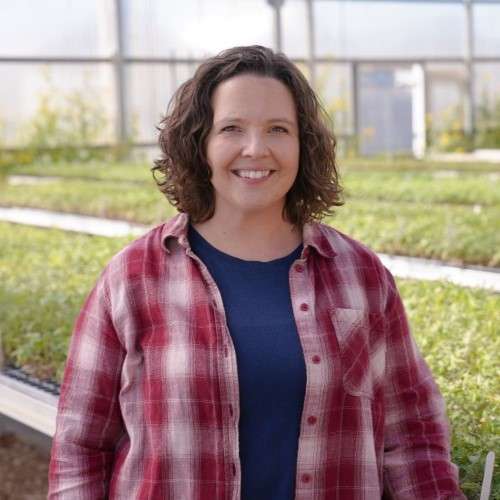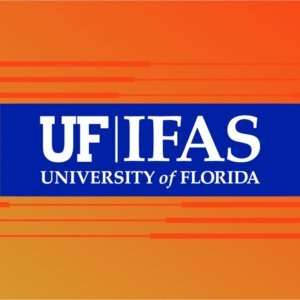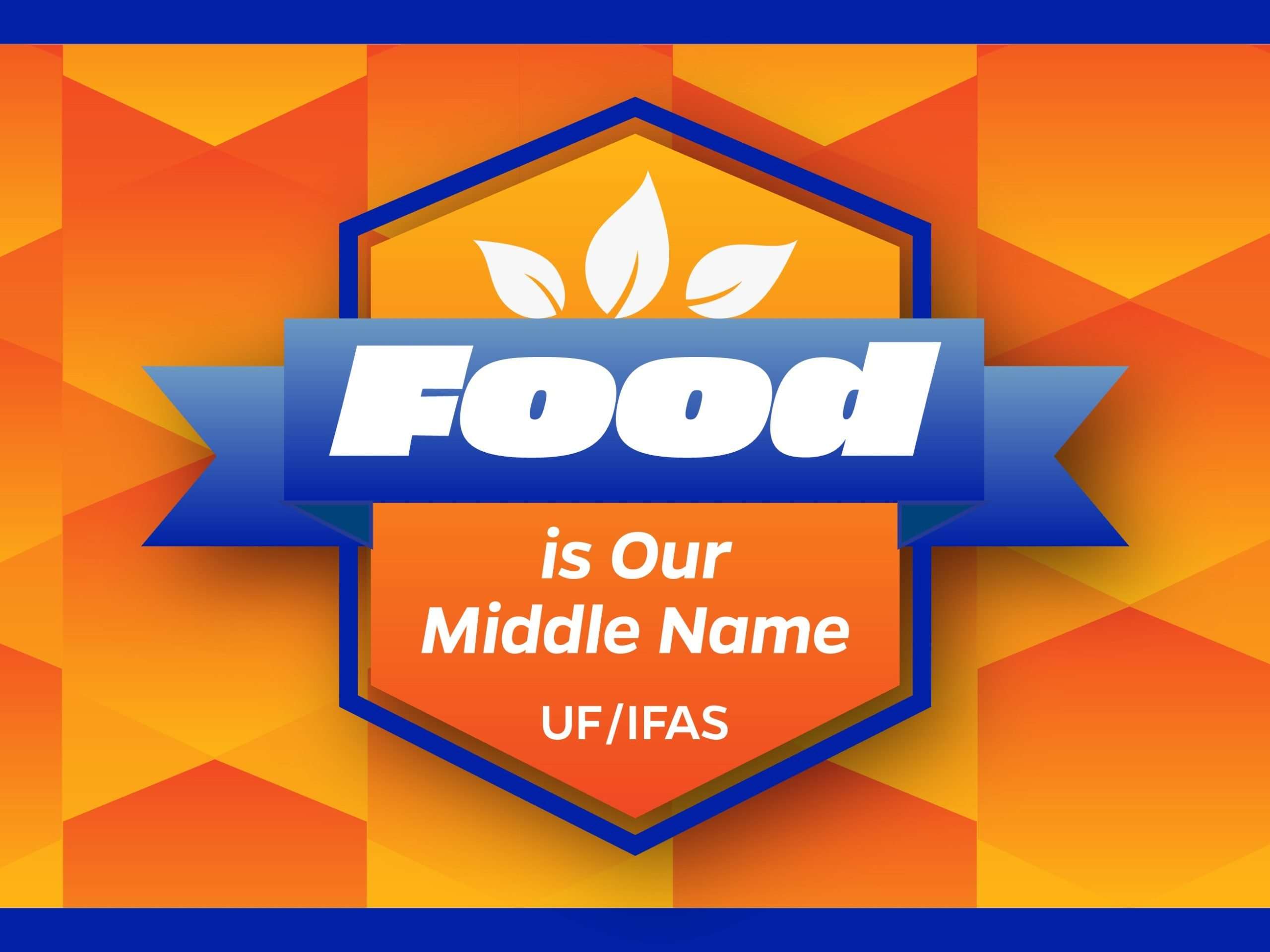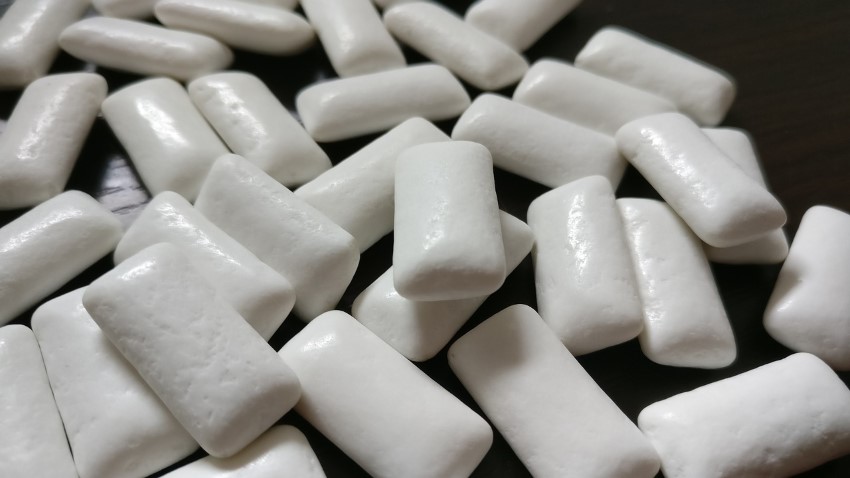Jessica Chitwood-Brown grew up in rural Alma, Arkansas, where she rode horses, fished with her dad and played at the marina.
She also recalls participating in the Crawford County Fair, going to football games on Friday nights, horse shows, rodeos and “everything in between.”
“It was small-town life, you know?” said Chitwood-Brown, the new tomato breeder at the University of Florida Gulf Coast Research and Education Center (GCREC). “Everybody knew everybody, and I couldn’t get away with anything, even if I had wanted to because news would have made it back to my mom before I even got home.”

Dr. Jessica Chitwood-Brown, UF/IFAS Gulf Coast Research and Education Center. Credit: Alice Akers, UF/IFAS
She stayed in Alma while attending the University of Arkansas-Fort Smith for her bachelor’s and master’s degrees. Then she moved to the Sunshine State to earn her doctorate at the GCREC, near Tampa.
Chitwood-Brown has come full circle and now runs the lab where she earned that Ph.D. and did her post-doctoral research, in the northern end of Florida tomato country.
In an interesting twist, Chitwood-Brown is replacing her doctoral adviser, Sam Hutton, at the GCREC.
“My first day on the job, I had a lot of mixed feelings, especially being in the same office that was once Sam’s and sitting behind the desk that was his,” she said, adding with a chuckle, “I keep saying ‘I need to change the furniture, so it feels different.’”
Jack Rechcigl, director of the GCREC, recalled the great research Chitwood-Brown did while a Ph.D. student and post-doc in Hutton’s lab, and it’s a big reason he interviewed her for the position.
“Jessica learned under a top-notch tomato breeder in Sam Hutton,” Rechcigl said. “We know she’ll continue developing tomatoes that meet the needs of our state’s growers, including varieties that resist pests and diseases. She’ll also work to breed tomatoes with fine flavor and aroma. We’re really excited to see where Jessica takes the tomato-breeding program.”
Now that she’s settled in, Chitwood-Brown wants to improve on the great work of her predecessors, including Hutton and Jay Scott. For instance, her stakeholders – from growers to consumers – may desire different traits in tomatoes.
Hutton released several tomato hybrids last year that were bred to be machine harvestable. These hybrids are currently available for licensing through Florida Foundation Seed Producers.
Incorporating AI Into The Program

GCREC has hired Kevin Wang, an agricultural engineer who specializes in AI, to help with plant breeding. His research should bolster Chitwood-Brown’s search for the best tomato genes.
“I am excited about the opportunities for using AI-based tools to improve selection in the breeding program,” she said. “This is a new field for me, so first, I am focusing on learning what the possibilities are.”
In addition to the AI scientists, Chitwood-Brown looks forward to working with other faculty – including entomologists and plant pathologists — at GCREC to improve tomatoes.
Before being hired at GCREC, Chitwood-Brown worked as a peanut breeder at Colorado State University for a year.
“I learned a lot in the short time I was at CSU about running a program, developing relationships with the industry, about big plans and how to accomplish them. I am excited to make that happen here,” she said.
Now that she’s at the GCREC, it’s time to translate her experience and education with her tomato-breeding goals.

“I want my students – who came with me from CSU – to put together product profiles for tomato varieties here in Florida,” Chitwood-Brown said.
Product profiles essentially break down a variety into its parts. They answer the question: What are the traits of a successful tomato variety? This information comes from the stakeholders and gets specific.
“For example, I ask growers to give me a range for how many bins of fruit (or boxes, if we are talking about pack-out) per acre would they find acceptable? What are they getting now? That kind of thing,” Chitwood-Brown said. “These are the basic traits — things a variety has to have to be considered at all.”
Product profiles are living documents. Each season and year, more information is added, or a new disease emerges, or a trait becomes more important. But Chitwood-Brown will stay in contact with the industry, updating the profiles and continually steering the ship to a course that aligns with your industry.
“It feels great to hit the ground running with the season starting and getting out and meeting growers and people in the industry,” she said.
About UF/IFAS

The mission of the University of Florida Institute of Food and Agricultural Sciences (UF/IFAS) is to develop knowledge relevant to agricultural, human and natural resources and to make that knowledge available to sustain and enhance the quality of human life. With more than a dozen research facilities, 67 county Extension offices, and award-winning students and faculty in the UF College of Agricultural and Life Sciences, UF/IFAS brings science-based solutions to the state’s agricultural and natural resources industries, and all Florida residents.
Why Food Is Our Middle Name

Feeding a hungry world takes effort. Nearly everything we do comes back to food: from growing it and getting it to consumers, to conserving natural resources and supporting agricultural efforts. Explore all the reasons why at ifas.ufl.edu/food or follow #FoodIsOurMiddleName.


